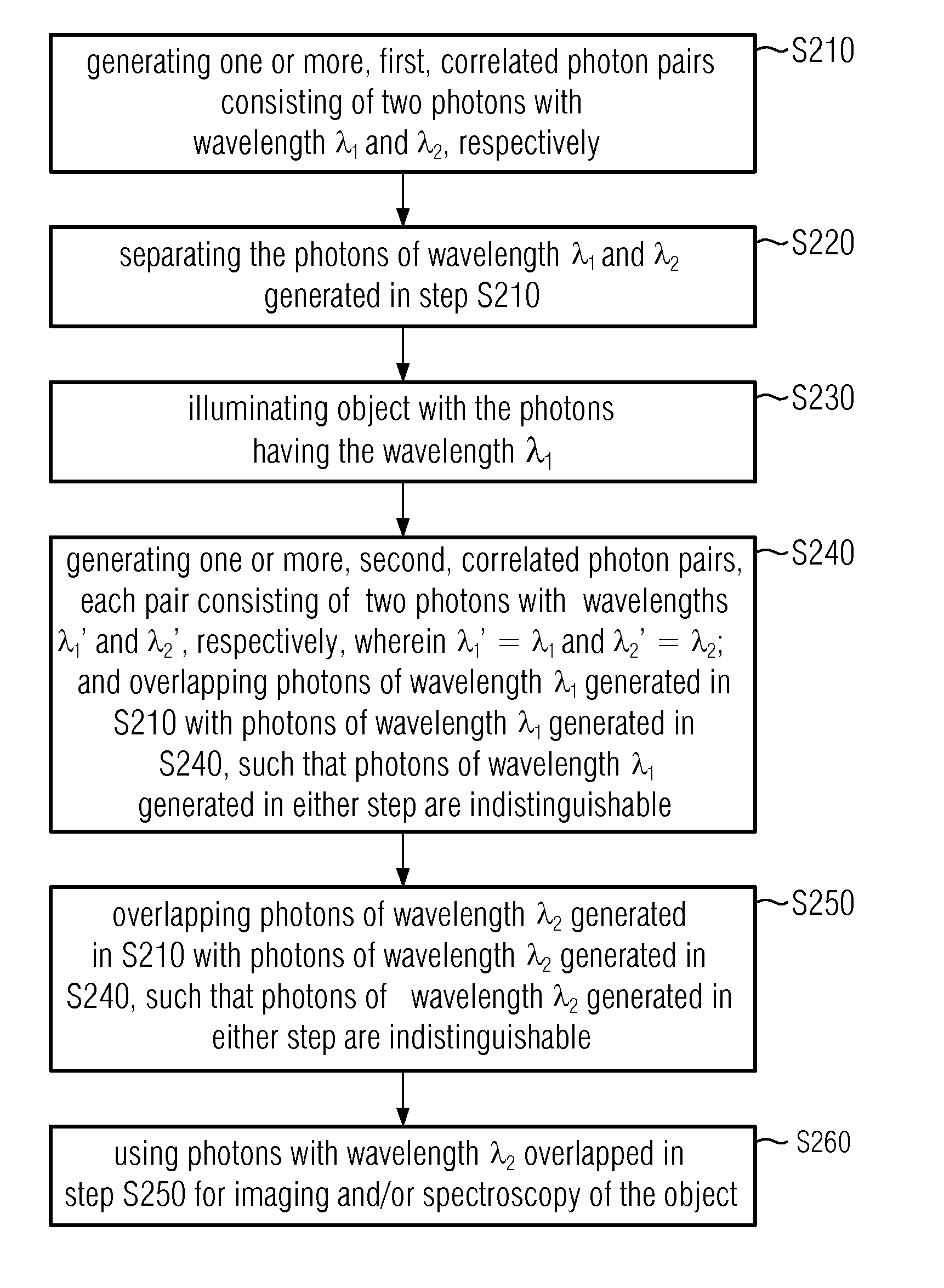Quantum imaging with undetected photons
a quantum imaging and photon counter technology, applied in the field ofquantum imaging and quantum spectroscopy, can solve the problems of major drawback, high dark count of mir photon counters, and difficulty in detecting the photons that illuminate objects
- Summary
- Abstract
- Description
- Claims
- Application Information
AI Technical Summary
Benefits of technology
Problems solved by technology
Method used
Image
Examples
examples
[0098]The following should provide proof of principle results, using the above-described embodiments.
[0099]In FIG. 6 a first example is shown. For this example, two periodically poled potassium titanyl phosphate, ppKTP, crystals are used as non-linear media. It should be noted that bulk crystals could be used as well. The sample is a silicon sample. The sample has a figure, i.e., a symbolic cat-like outline, etched on the sample. The source beam is a 532 nm pump laser. The sample is then illuminated with 1550 nm photons. This may be regarded as a telecom wavelength. Cameras available at this wavelength are usually very expensive and exhibit lower performance than in the visible light spectrum. Moreover, such cameras may be subject to severe export restrictions. The image, however, is generated by using 810 nm photons impinging on the image generator. These photons with a wavelength of 810 nm do not interact with the sample.
[0100]It should be noted that silicon is basically opaque fo...
PUM
| Property | Measurement | Unit |
|---|---|---|
| FWHM | aaaaa | aaaaa |
| wavelength | aaaaa | aaaaa |
| wavelength | aaaaa | aaaaa |
Abstract
Description
Claims
Application Information
 Login to View More
Login to View More - R&D
- Intellectual Property
- Life Sciences
- Materials
- Tech Scout
- Unparalleled Data Quality
- Higher Quality Content
- 60% Fewer Hallucinations
Browse by: Latest US Patents, China's latest patents, Technical Efficacy Thesaurus, Application Domain, Technology Topic, Popular Technical Reports.
© 2025 PatSnap. All rights reserved.Legal|Privacy policy|Modern Slavery Act Transparency Statement|Sitemap|About US| Contact US: help@patsnap.com



